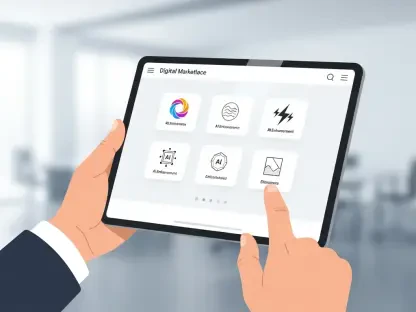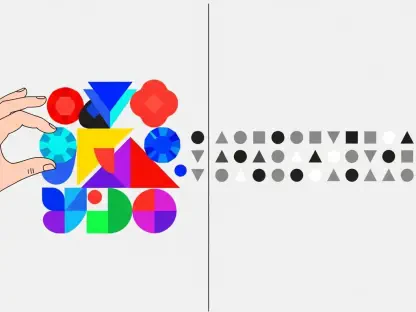In an era where data speaks louder than words, Laurent Giraid stands at the forefront of using technology to interpret and visualize complex concepts. With a deep focus on machine learning and natural language processing, he bridges the gap between abstract data and tangible understanding. In this interview, we explore how Giraid approaches data visualization, drawing on projects that aim to clarify the emotional and factual implications of subjects like climate change.
What inspired you to address climate change through the lens of data visualization?
The motivation was realizing that the usual presentation of climate data was often filled with technical jargon and impersonal statistics. People experience weather, not climate, directly. The challenge was to interpret these scientific concepts in a humanized way, where future weather scenarios for cities are relatable to current experiences, like comparing New York’s future climate to Barcelona’s present.
How do you distinguish between people’s perception of climate versus weather in your visual storytelling?
It’s crucial to highlight the difference. While weather is what people feel day-to-day, climate is the long-term pattern. Visualization helps in creating a narrative that explains this difference by showing how familiar cities might undergo unfamiliar changes, making the idea of climate change more personal and palpable.
Can you discuss how visual representation enhances understanding of climate change beyond mere statistics?
Visuals bring a human touch to data. Instead of leaving people with abstract numbers, we offer a story that portrays concrete changes. It’s not just about showing how much a city’s temperature may rise but illustrating how its climate might resemble another, evoking a more intuitive understanding of the potential impacts.
How did your historical knowledge of climate research shape your method of categorizing cities in your project?
Historical climate data offers vital context. I found inspiration early on from datasets classifying global climate zones, recognizing how similar temperatures feel different in diverse contexts. This insight guided the categorization, acknowledging that local experiences of climate can profoundly vary, even with similar numerical data.
What were the criteria for selecting the cities featured in your project?
Selection involved balance and relatability. We aimed for a distribution across various climate zones, ensuring representation. Additionally, choosing cities with recognizable identities helped, so audiences could visualize and emotionally connect with the changes, even if they hadn’t visited these places personally.
Could you elaborate on the technical workflow involved in creating your data narrative, starting with data cleaning?
The technical process began with data cleaning, primarily using Python and Postgres for organization. This was the straightforward part, accomplished in about a week. The greater challenge was developing a compelling narrative through interactive visualization, which required using the Svelte JavaScript framework to create an engaging user experience.
What specific tools and programming languages were crucial in crafting this visualization?
Python and Postgres were key for data preparation. For visualization, we utilized Svelte, a JavaScript library, enabling robust, interactive visuals. These tools together helped transform raw data into a meaningful story that speaks to both lay and expert audiences.
How did your previous work focusing on Africa inform the development of the “Climate Zones” project?
The Africa project served as a conceptual springboard. I used it to pitch the broader idea by demonstrating the feasibility of layering datasets over 3D maps. While initially ambitious with a global scope, it provided the learning and refinement necessary to hone in on the “Climate Zones” project, focusing more narrowly and achieving greater depth.
What were some developments you applied from your initial project to this new one?
The primary advancement was the refined storytelling approach. Learning from previous experiences, we aimed to distill complex data into a clearer, more engaging narrative. Enhanced interactivity and a more focused scope helped deliver a more impactful message without unnecessary complexity.
Has this project shifted your approach or perspective in data science?
Absolutely. It underscored the importance of iterative refinement of the story, always prioritizing clarity. Moreover, it highlighted the significance of user-friendly, engaging visual interfaces, which I’ve integrated into my daily practices and front-end development work.
How do you ensure your data visualizations capture interest while remaining accessible to diverse audiences?
The key is simplicity. We concentrate on the main takeaway for the reader, streamlining everything to support that message. By pruning unnecessary elements, the visualizations remain technically robust yet simple and engaging, effectively communicating complex ideas.
What do you hope your audience will gain from interacting with your project?
The goal is to shift perceptions about climate change, making the data resonate on a personal level. Ideally, the project encourages deeper reflection and dialogue, moving beyond scientific discourse to a more relatable conversation about the changes ahead.
Do you have any advice for our readers?
Absolutely. I’d say always look for context in data. Numbers tell a story, but without understanding the narrative or human impact, they remain abstract. Whether you are analyzing or simply consuming information, strive to see the broader picture and consider the human stories behind the data.









